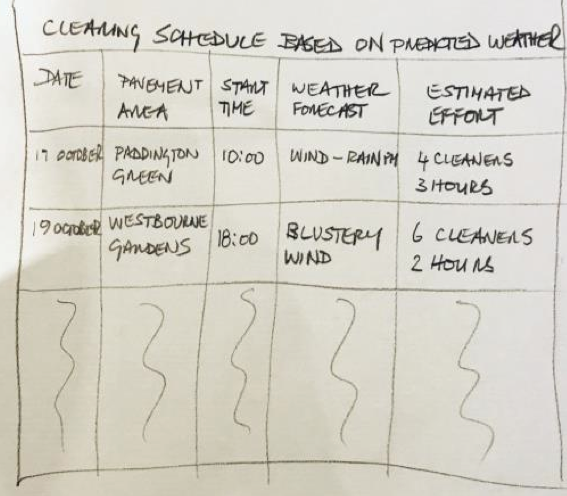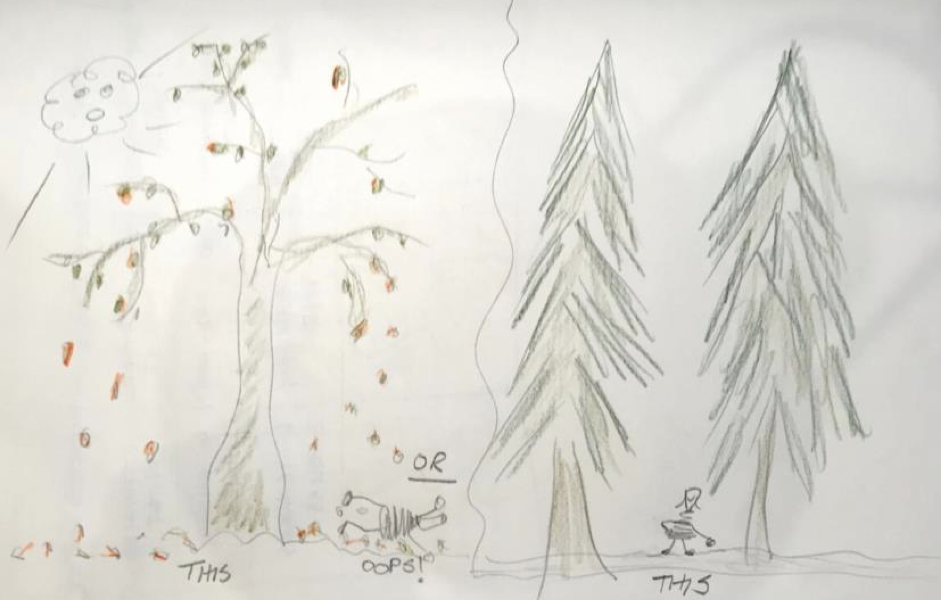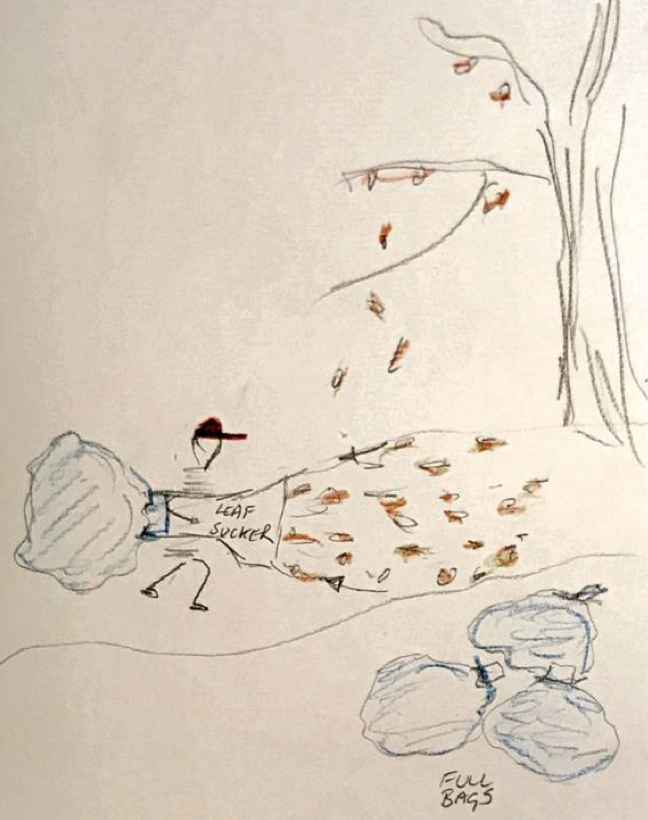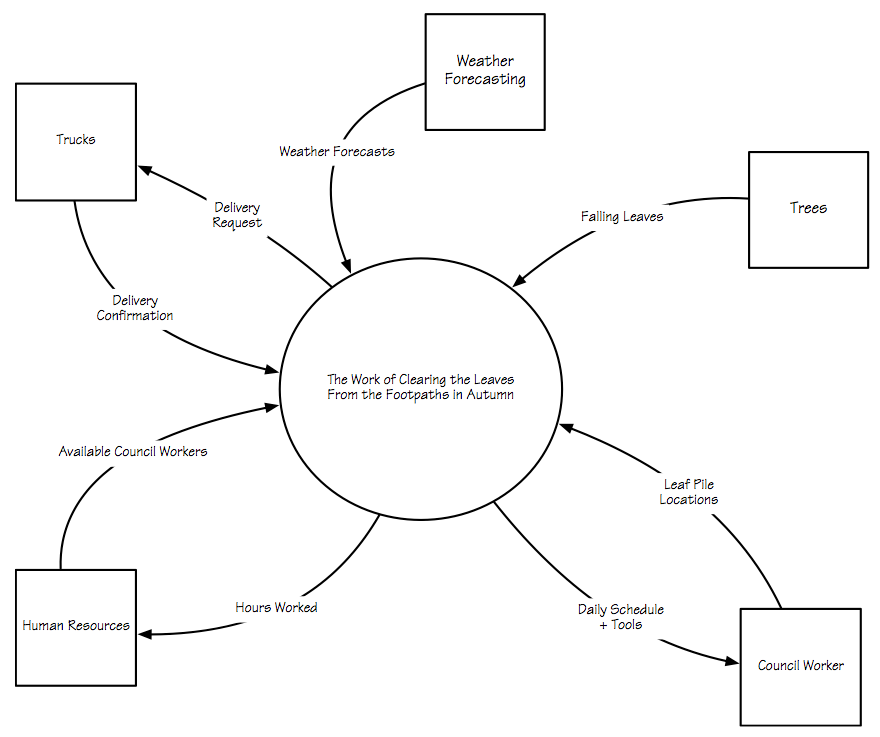
In a previous article Business Analysis Viewpoints we discussed a number of ways of looking at systems. The intention of these viewpoints is to make it easier to see and understand the real business problem. This article focuses on the fourth viewpoint, the Future-How, which looks at the solution to the business problem. It does this by assessing alternatives, and then choosing the best solution to that real business problem.
Identifying Alternative Solutions
Let’s suppose that you have done enough analysis to identify the real business problem. In the previous article mentioned above, we investigated the problem of removing fallen leaves from footpaths in autumn. Leaves need to be removed as quickly as possible – leaves can be dangerous and slippery, especially in wet weather (it’s autumn remember). The intention is to make the footpaths as safe as possible for pedestrians and thereby avoid accidents caused by slippery leaves.
Instead of fixing on the first solution that comes to mind, it makes sense to come up with a number of alternatives. By so doing, better solutions will probably emerge. Then you must be able to make valid comparisons and choose the most appropriate before defining its detailed requirements.
Some solution ideas for speeding up leaf removal might be:
1. Schedule the leaf clearing teams in advance based on predicting when the leaves will fall so that the team can be deployed as rapidly as possible.
2. Eliminate the leaves by cutting down the deciduous trees and replacing them with evergreens.
3. Introduce leaf vacuum machines to remove the leaves and bag them in one operation.
4. Provide an incentive for members of the public to clear the leaves. Make leaf bags available and pay a bounty for each full bag of leaves.
Probing Your Solutions
In order to choose between your ideas for alternative solutions you can explore each one using a technique called Safe-to-Fail Probes. These are quick, small-scale experiments aimed at establishing the viability and acceptability of solutions. As the name suggests, if a solution fails, then very little is lost. The proposed solution was only a sketch and discarding it does not affect the project in any way.
Before probing a proposed solution, bring it to life. Illustrate it just enough to compare it with the other ideas. Use a mixture of sketches – possibly some kind of annotated rich picture, or process models – along with your probing questions. You are asking questions that probe the proposed solution for its pros and cons. You are testing the solution for feasibility and workability, along with its economics and conformance to constraints.
Here are some examples of safe to fail probes using the proposed solutions for the leaf removal problem.
Proposed Solution 1. Schedule and deploy the leaf clearing teams in advance based on predicting when the leaves will fall.

You can make the idea more specific by sketching a leaf clearing schedule and use it to help think of questions:
• How many days in advance would we need to predict the schedule?
• What are the normal start and end times of a leaf cleaner’s shift?
• Is there enough artificial light to do leaf clearing at night?
• Given that leaf clearing is limited to autumn, can we use casual labour?
• Is the weather forecasting accurate enough to predict when the leaves will start falling?
Proposed Solution 2. Eliminate the leaves by cutting down the deciduous trees and replacing them with evergreens.

This would avoid the necessity to clear leaves.
• What effect would it have on leaf clearers’ jobs?
• No leaves mean no more pedestrians slipping.
• Are the deciduous trees protected? Do English Heritage or the local council or any other bodies have regulations regarding cutting down trees?
Proposed Solution 3. Introduce leaf vacuum machines to remove the leaves more quickly and bag them all in one operation.

How many leaf vacuum machines do we need and what is the estimated cost of buying them?
• What training is required for the leaf clearing staff to be able to operate the new machines?
• What is the best way of disposing of the full bags of leaves?
• Could we sell the bags of leaves to a fertiliser company?
Proposed Solution 4. Provide an incentive
for members of the public to clear the leaves. Make leaf bags available and pay a bounty for each full bag of leaves.
• Will members of the public be prepared to do this work?
• Maybe kids or school groups could make pocket money.
• Potential problem with timing due to availability, we need the leaves to be picked up as soon as they fall.
• Need council employees to supervise this work.
By sketching, questioning and probing your alternative solutions you bring them to life and identify the solution or solutions that are the best fit for your problem.
After probing the leaf removal solution ideas with a variety of stakeholders, we have decided to go ahead with Solution Idea 3. Introduce leaf vacuum machines to remove the leaves more quickly and bag them all in one operation. We have also decided to take some ideas from Solution 1 and make better use of long-range forecasts when scheduling the leaf removal teams.
Defining the Solution Space
Now, as the first step to identifying the detailed requirements, you can sketch out the scope of your chosen solution space. Use business events (covered in the first article in this series) to identify the functional chunks of the solution Then use the business events to prioritise your work of building the solution. Here’s a diagram that summarises our intended solution scope after having done some safe-to-fail probes.

Using business events to partition the solution space identifies6 events:
1. New weather forecast available. I/P Weather Forecasts, O/P Emergency Schedule
2. Footpath condition monitored. I/P Footpath Location + Leaf Density
3. Human Resources inform us of available workers. I/P Available Council Workers
4. Council Worker has bags of leaves available for pickup. I/P Leaf Bag Locations. O/P Hours Worked, Leaf Pickup Request
5. Time to schedule leaf vacuuming. O/P Daily Schedule + Tools, Request for Vacuum Machines.
6. Machine Supplier supplies requested machines. I/P Leaf Vacuum Machines.
Then, depending on your goals, you choose the highest priority event and work on discovering the detailed requirements and developing the solution. For example, you might choose to start with event 5 because having an accurate schedule is so central to making the solution work. Or perhaps you start with event 1 because you want to learn more about how you will respond to weather forecasts of differing severity.
In this article and the previous one in this series we have introduced techniques for taking a number of viewpoints. Having the ability to look at the same problem from different points of view means that you have the focus to come up with more innovative ideas. Another plus is that it is much easier to plan and respond to changes.


29 en 30 oktober 2025 Deze 2-daagse cursus is ontworpen om dataprofessionals te voorzien van de kennis en praktische vaardigheden die nodig zijn om Knowledge Graphs en Large Language Models (LLM's) te integreren in hun workflows voor datamodel...
3 t/m 5 november 2025Praktische workshop met internationaal gerenommeerde spreker Alec Sharp over het modelleren met Entity-Relationship vanuit business perspectief. De workshop wordt ondersteund met praktijkvoorbeelden en duidelijke, herbruikbare ri...
17 t/m 19 november 2025 De DAMA DMBoK2 beschrijft 11 disciplines van Data Management, waarbij Data Governance centraal staat. De Certified Data Management Professional (CDMP) certificatie biedt een traject voor het inleidende niveau (Associate) tot...
25 en 26 november 2025 Worstelt u met de implementatie van data governance of de afstemming tussen teams? Deze baanbrekende workshop introduceert de Data Governance Sprint - een efficiënte, gestructureerde aanpak om uw initiatieven op het...
26 november 2025 Workshop met BPM-specialist Christian Gijsels over AI-Gedreven Business Analyse met ChatGPT. Kunstmatige Intelligentie, ongetwijfeld een van de meest baanbrekende technologieën tot nu toe, opent nieuwe deuren voor analisten met ...
8 t/m 10 juni 2026Praktische driedaagse workshop met internationaal gerenommeerde spreker Alec Sharp over herkennen, beschrijven en ontwerpen van business processen. De workshop wordt ondersteund met praktijkvoorbeelden en duidelijke, herbruikbare ri...
Alleen als In-house beschikbaarWorkshop met BPM-specialist Christian Gijsels over business analyse, modelleren en simuleren met de nieuwste release van Sparx Systems' Enterprise Architect, versie 16.Intensieve cursus waarin de belangrijkste basisfunc...
Deel dit bericht